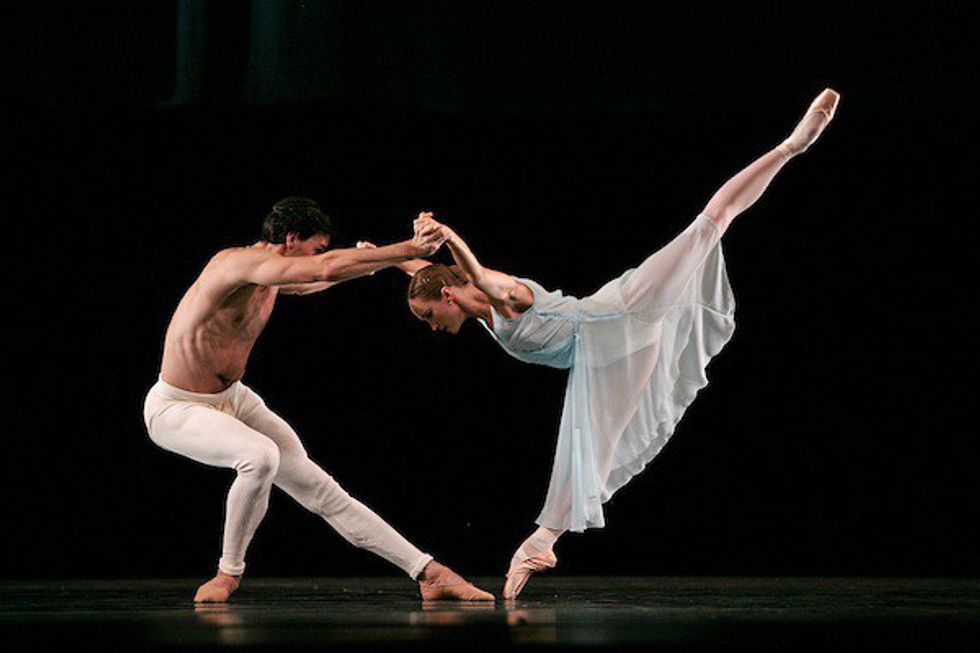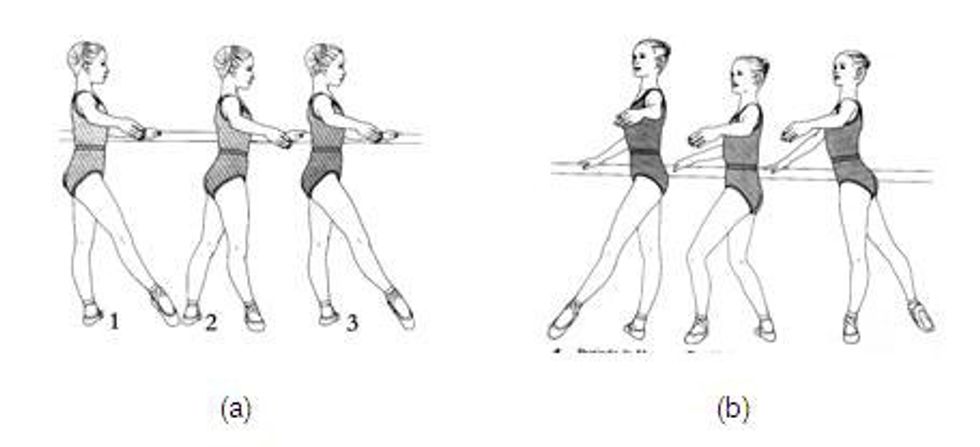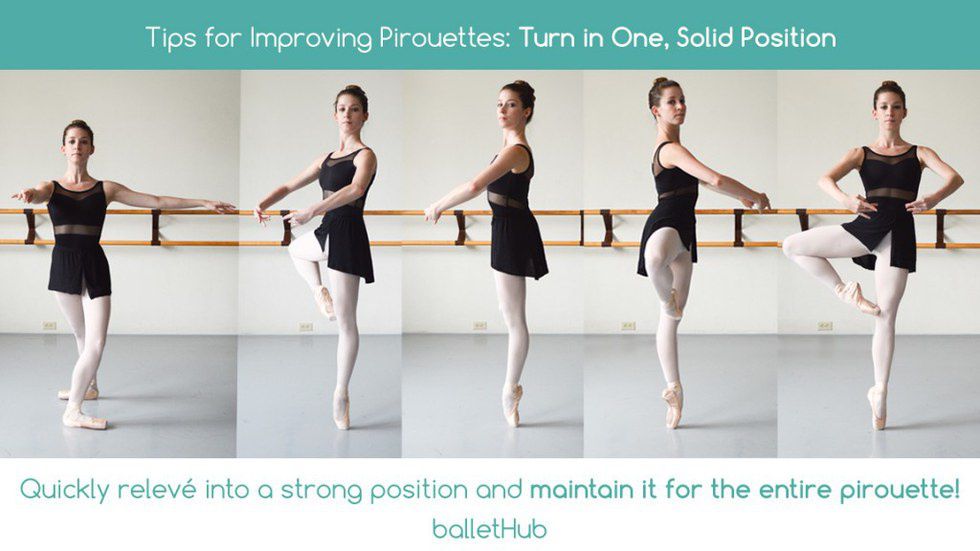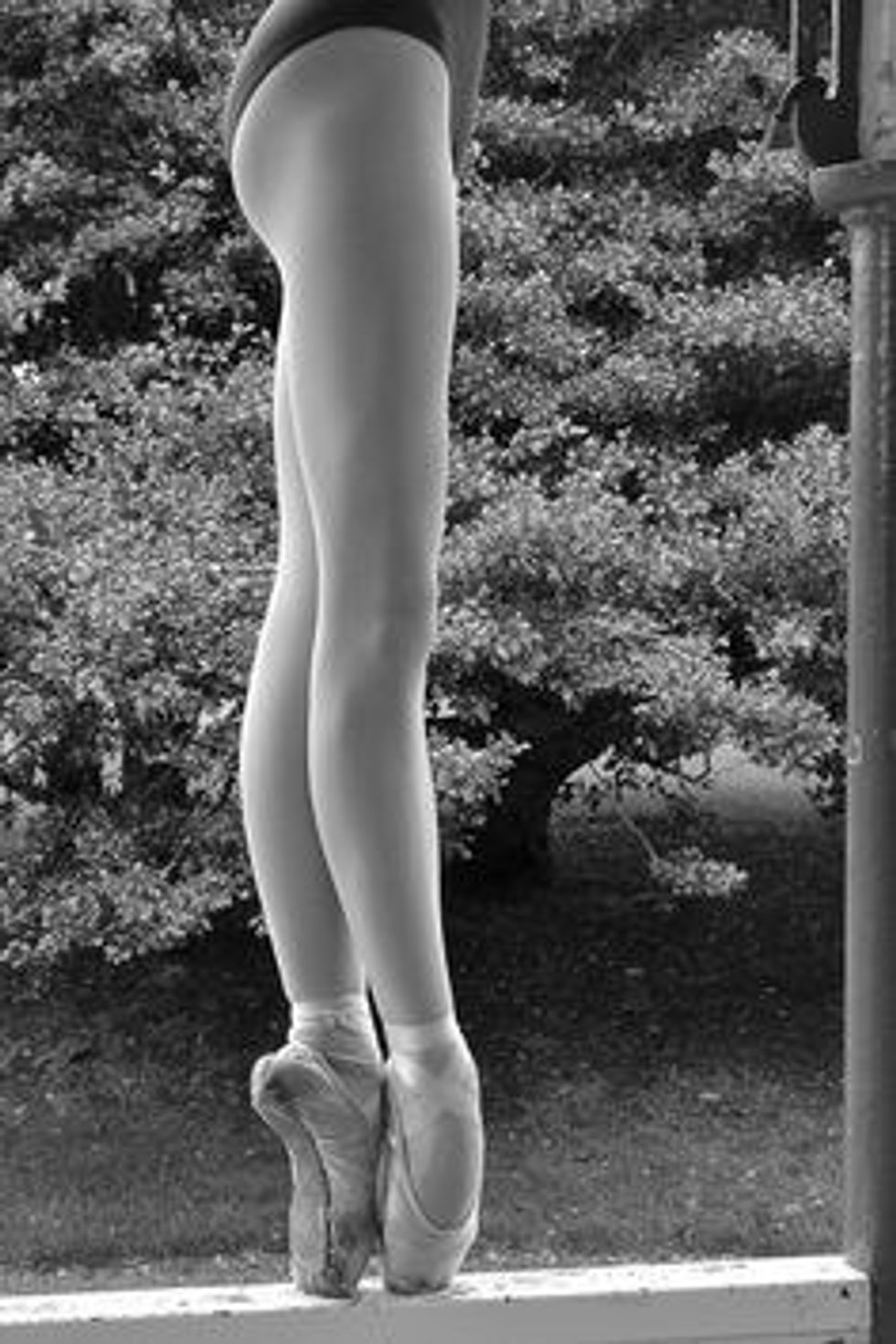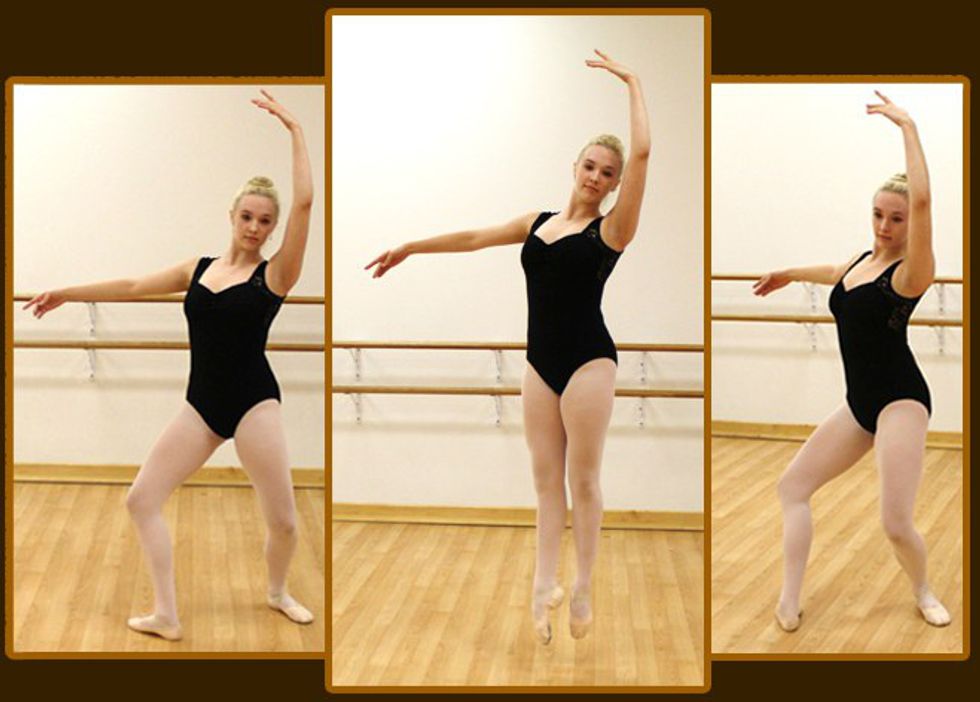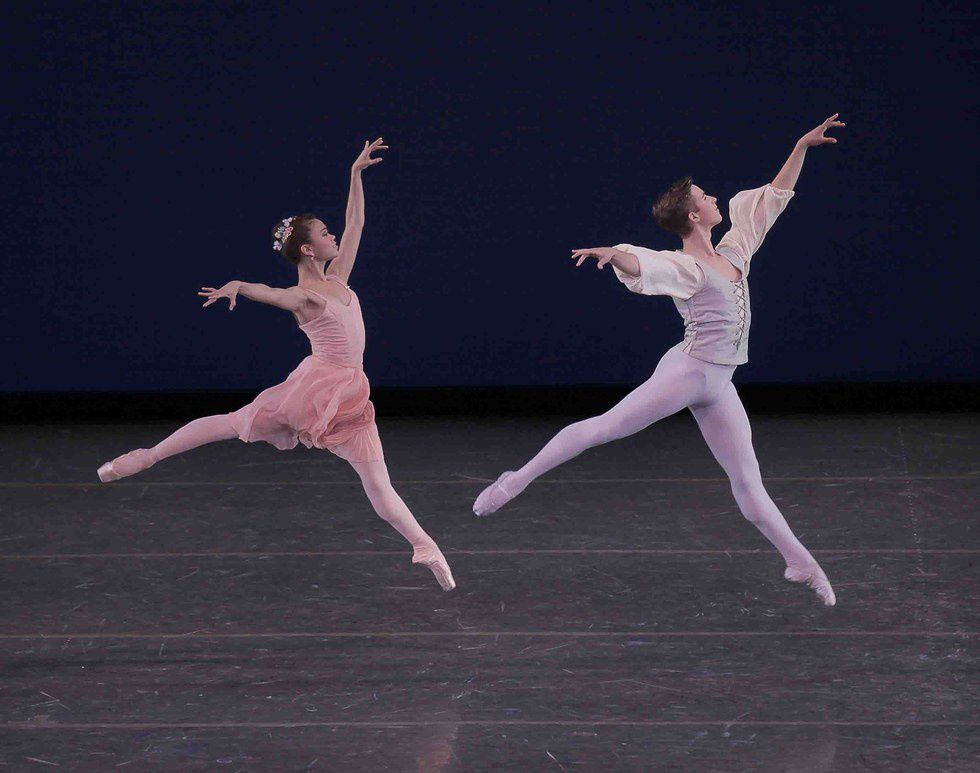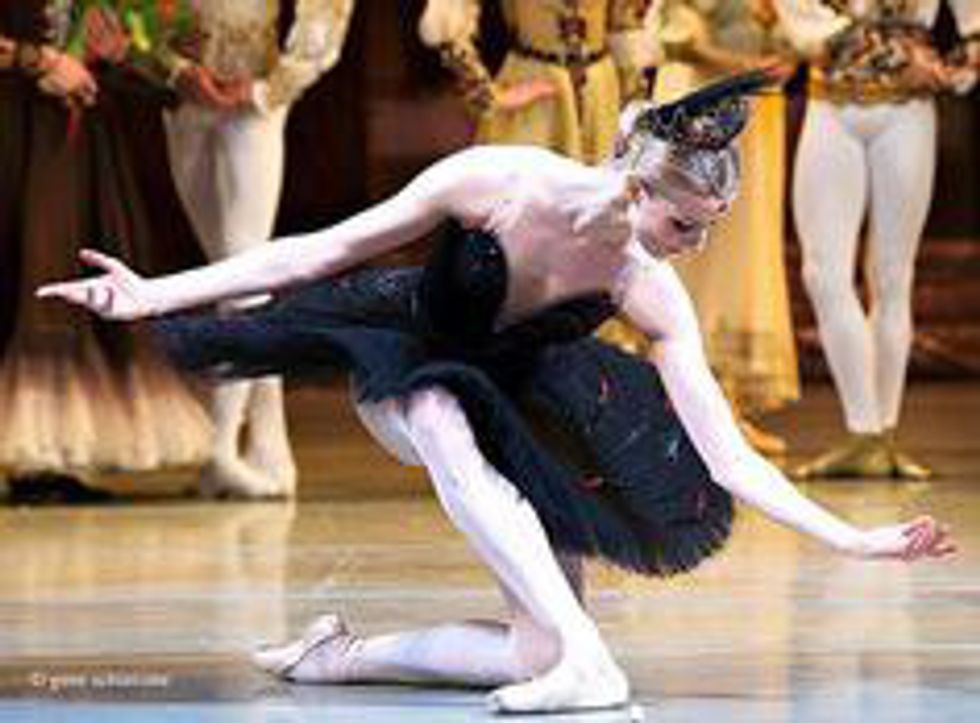Following barre, generally dancers do center.
1. Adagio
Commonly called Adage, the word is derived from an Italian word ad agio, meaning at ease or leisurely. Adagio is generally slow and controlled, showing off extensions and beautiful port de bras. Usually, it is the second to last combination at barre and the first combination in the center. This is also usually the first second of a pas de deux (dance of two).
2. Temps lie
Temps lie means connected movement. This is often used in an Adagio or tendu combination. Temps lie is a connect movement through second or fourth position that switches the weight between the legs.
3. Pirouette
A piroutte is a whirl or a spin. Pirouttes can be done en dehors (outward) or en dedans (inward). During a piroutte, the placement of the body is very important. The body should be pulled up with the shoulders down. The arms usually take a first or fifth position and assist with the turn. Pirouttes generally start with the feet in fifth or fourth. Spotting can assist in a piroutte. An article specifically for turns will come later.
4. Sous-Sus
Sous-sus means under-over. It can also be spelled sus-sous. In this step, the dancer draws both feet up onto demi-pointe or to pointe in fifth position. The knees should be pulled up and ankles keep from wobbling.
5. Waltz
A waltz step is the same as a ballroom waltz. It is in 3/4 time and usually takes the phrase "down, up, up" to associate with the steps. This was introduced to ballet in the 1800's by Pierre Gardel. Waltz of the Flowers from the Nutcracker is shown below.
6. Pique
Pique means to prick or pricking. The dancer steps with a straight leg onto pointe or demi-pointe. There are many different kinds of piques, including pique arebesque, attitude, or pique turn. A dancer may also just prick the floor and it is referred to as a pique. (shown below)
7. Chasse
Chasse means chased. Usually, the are done in a sequence and will be a preparation for a leap. Feet and legs should meet a fifth position in the air.
8. Allegro
Allegro means brisk or lively. In center, a dancer performs petite allegro, which are usually small jumps consisting of assembles, glissades, jetes, and many more. Then, they will go on to grande allegro, or big jumps, and do grande jetes, tour jetes, and other large jumps. The movements should be smooth, show ballon, and be light. An article specifically for allegro vocabulary will come later.
9. Foutte
Foutte means whipped. This refers to a movement quality. There are many different kinds of fouttes, including en tournant (turning), saute, or in releve. A foutte turn is shown below.
10. Reverence
At the end of a performance or class, a dancer will perform a reverence or bow. At the end of a class, this shows respect for the teacher.




